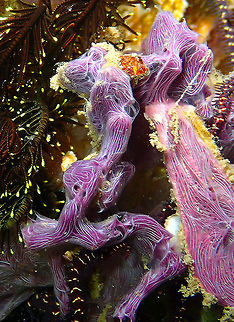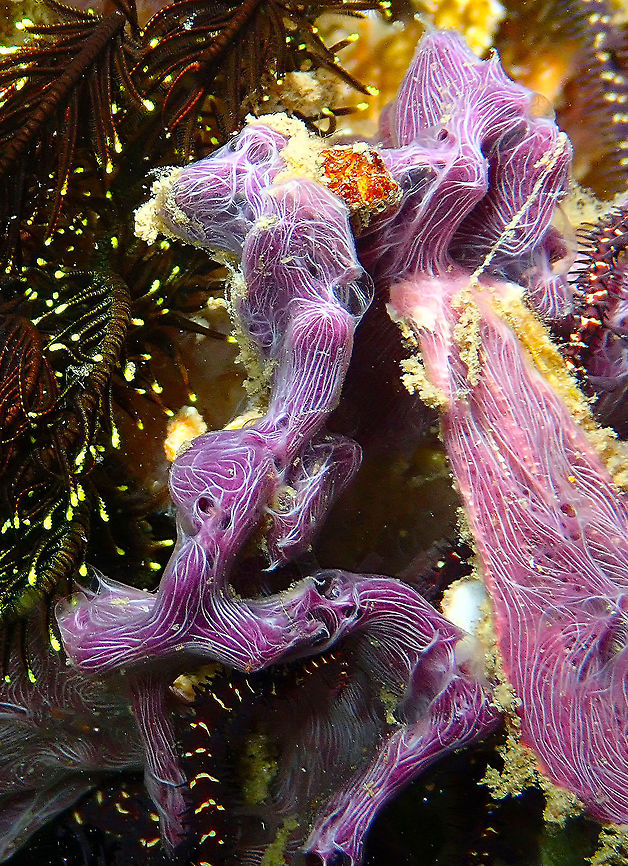
Chalinula nematifera (Porifera: Haplosclerida) is an encrusting sponge able to overgrow live corals. Chalinula nematifera belongs to the order Haplosclerida, family Chalinidae. It is characterised by a mauve colouration and by white, wavy filaments, produced by symbiotic fungi.
Similar species: Haplosclerida
By Patomarazul
All rights reserved
Uploaded Aug 13, 2018. Captured May 16, 2018 12:47 in Unnamed Road, Batulubang, Lembeh Sel., Kota Bitung, Sulawesi Utara, Indonesia.


comments (8)
The Coral Killing Sponge (Chalinula nematifera) is a beautiful, purple and white encrusting sponge that is capable of killing live corals. It's a common sponge in the Indo-Pacific, but it has now become invasive in coral reefs along the Mexican Pacific coast. Sponges are important to the structure and energy flow of coral reefs as they play roles in bioerosion and bioconstruction. But, they can also be strong competitors that can overgrow and outcompete native coral. They grow rapidly, spread extensively, and can easily become dominant. Because of this, the coral killing sponge is considered a potential threat to Pacific Mexican coral reefs. {Spotted in Indonesia by JungleDragon moderator, Patomarazul} #JungleDragon Posted 6 years ago
You can answer directly here or by email at chalinulanematifera@gmail.com.
Thank you very much for your willingness and collaboration. Posted 6 years ago
I wish I would have paid more attention at the moment. All I can say is that I saw it at a place called The Monument (Trikora), which is just a dive site next to a town's pier. The farthest down I went is 24 m and I stayed in average at 14 m but I don't remember exactly at which depth I saw the sponge. It was towards the end of the dive so I would estimate it was around 10 m. The temperature of the water surface that day was 29,6 C. The Monument has a mixture of rocks, rubble and small coral formations and is excellent as a night dive site to see small critters. I have another picture which I am sending you to your email above. It is difficult for me to say with certainty the substrate in which it was but by the picture it could be other encrusting sponges. Look for Monument as dive site to get more info. Hope it helps! :-) Posted 6 years ago